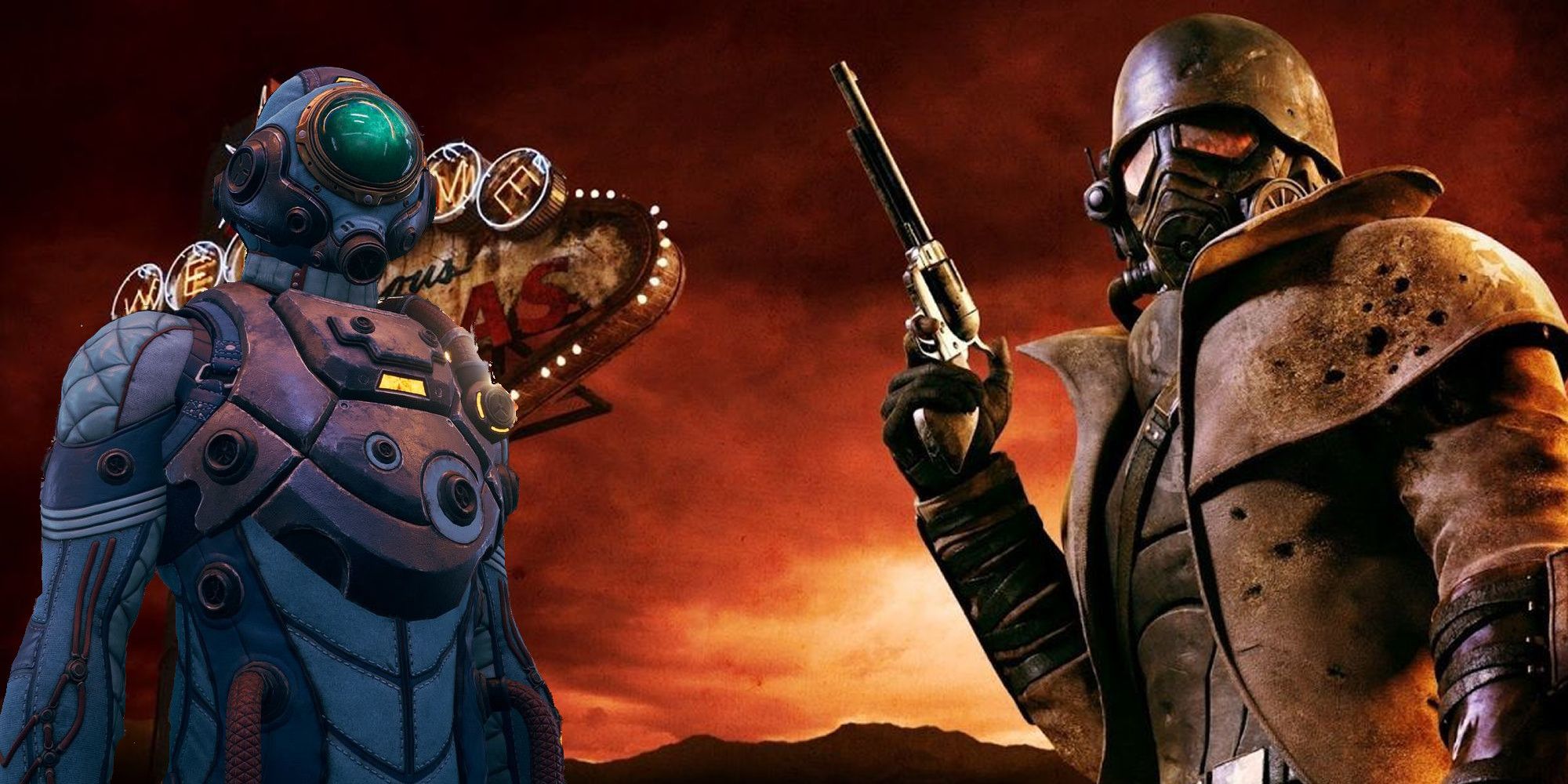Why Replay The Outer Worlds When Fallout: New Vegas Is Right There?

The Outer Worlds seemed like the perfect game for me. An Obsidian sci-fi RPG like those I poured hours into as a teenager, but with all the bells, whistles, and quality of life upgrades we’ve grown used to – what’s not to love? It turns out, quite a lot. The Outer Worlds borrows ideas from a host of better games: The Unreliable rips off the Normandy, even copying the sassy AI. The slow-mo combat sections are a riff on VATS. The Outer Worlds takes liberally from everything that came before it, but never quite reaches the same heights.
I don’t hate The Outer Worlds, in fact there are elements I like a lot. And, funnily enough, these elements are usually the original ones. I like how companions complement your stats and have their own conversations, despite the fact that the relationships aren’t as deep as Mass Effect. I like the weapon modding, despite the fact it falls short of full RPG customisation. And I like the variety of missions and exploration, despite the planets hiding fewer secrets than your average open world.
Related: Fallout Creators On Creating A Hopeful Dystopia In The Outer Worlds
When I heard that the Spacer’s Choice Edition would include the DLC I never played and give the RPG a new lick of paint, I thought it high time to drop back into Terra-2 and see what else I missed. My personal thoughts on remastering a game that was released three years ago aside, there was one thing that gave me pause: The Spacer’s Choice Edition would force me to restart from scratch.
While Spacer’s Choice apparently improves The Outer Worlds’ graphics, that’s not enough for me to play it all over again from the start. This feeling was compounded as I realised that players with 40-series graphics cards are experiencing framerates of around 50fps, so the apparent performance upgrades in the new version have either not materialised or there’s an old school Obsidian bug nibbling its way through the code. Put simply: why would I play The Outer Worlds again if I could just play Fallout: New Vegas?
This may feel like an uncharitable take. Why compare The Outer Worlds with one of the greatest, if not the greatest, RPGs ever made? But it’s a fair comparison when choosing a game to replay – why would I bother with a mediocre facsimile of New Vegas when I can just, you know, play New Vegas?
The Outer Worlds is competent, but nearly everything in the game is borrowed, and most of it from New Vegas. It’s understandable that Obsidian would fall back to ideas from its cult classic RPG, but the homages can sometimes be too close to the original for their own good. Take the Comes Now the Power quest in The Outer Worlds for example. The quest is one of the first missions you come across, and culminates in a big decision: do you divert the power from the Geothermal Power Plant to Edgewater, or to the Botanical Camp of deserters?
Both sides present solid reasons for needing the power, but siding with the Evil Corporation Responsible For All The Problems In The Solar System or a band of plucky outsiders wasn’t that difficult for me. Obviously, there are repercussions for both choices, too, mostly in the form of your reputation with each faction increasing or decreasing depending on whether you helped them or hindered them. In isolation, it’s quite a good quest with an important decision. But then you remember that New Vegas did that exact same quest, but better.
That Lucky Old Sun is also a quest about diverting power to different areas of the world, albeit this time the fate of Nevada is in your hands, rather than Terra 2. In this mission, there are five different choices, with only one being objectively wrong and, in classic New Vegas fashion, that is still an option if you’re embarking on a particularly chaotic playthrough. You’ve got the basic two choices: the ruling NCR in the Las Vegas strip or the poverty-stricken people of Fremont and Westside. However, choosing between them isn’t that simple, as picking NCR ensures they keep defending the HELIOS One power station, so could splitting the power between the two work? This is another option, but results in power brownouts as the station struggles to keep its output high enough to serve the entire state. There’s also the option to divert everything to ARCHIMEDES II, a hugely powerful space laser that is very handy in a fight.
Already, the options are less black-and-white than The Outer Worlds’ ripoff. I usually share the wealth, but I’ve been known to help out Fremont and Westside before, and even powered up the Death Star when my Courier was in a particularly selfish playthrough. The mission also impacts future quests in a far more impactful way than anything in The Outer Worlds does. If you pick up the solar panel parts, you can fix the solar array at Nellis Air Force Base without the required Repair stat. If you talk to a certain NPC before directing power to the whole region, he’ll give you a nice item. The roleplaying options in this quest alone are superior to anything The Outer Worlds has to offer, and that’s before you even get to the repercussions of your decision.
The Outer Worlds isn’t a bad game, but as this one quest alone shows, it just doesn’t have the roleplaying chops to stand up to the greats of the genre. It takes a lot of obvious inspiration from New Vegas in particular – and isn’t shy about showing it – but it never comes close to its master. So why would I even think about replaying it? If you asked me to choose between playing a janky, funny-looking, 2010-graphics New Vegas and an Outer Worlds that looks better than the real world, I’m still picking Fallout every time.
Next: The Witcher 3 Makes Even The Most Boring Tasks Exciting













